El Salvador: Ruta de las Flores
E hatisitsoe: 08.04.2018
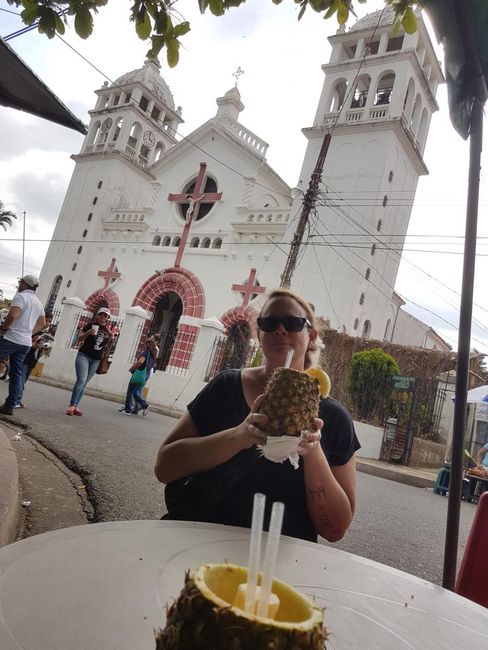
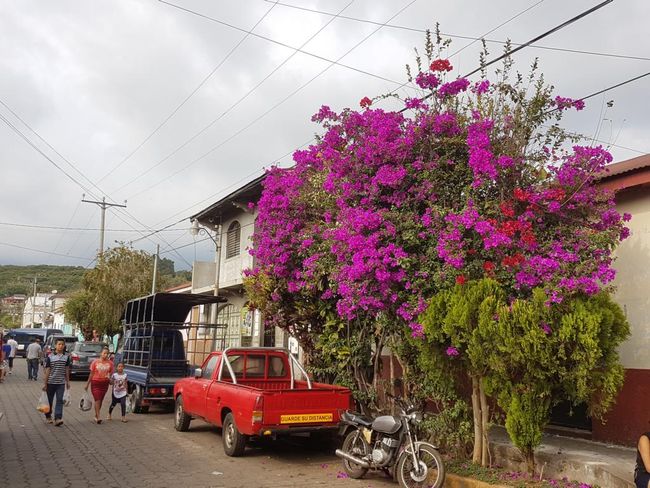
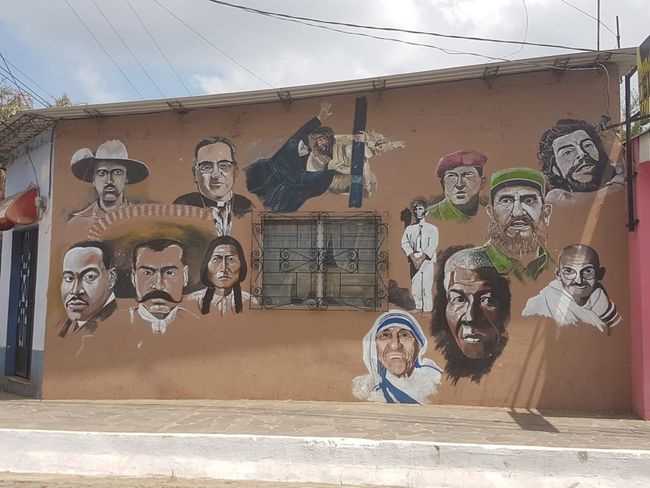
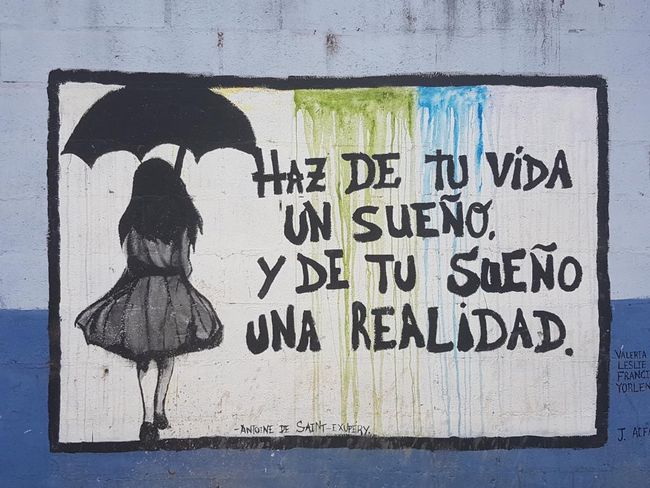
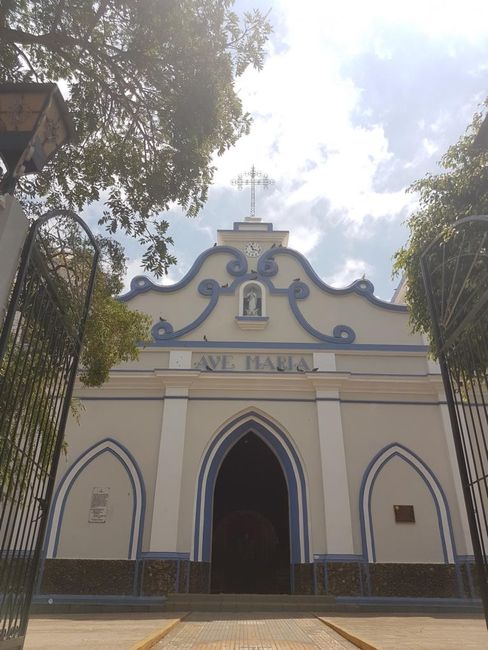
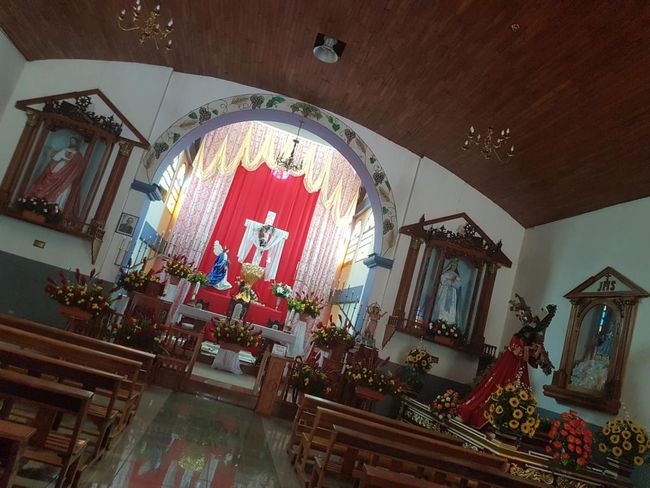
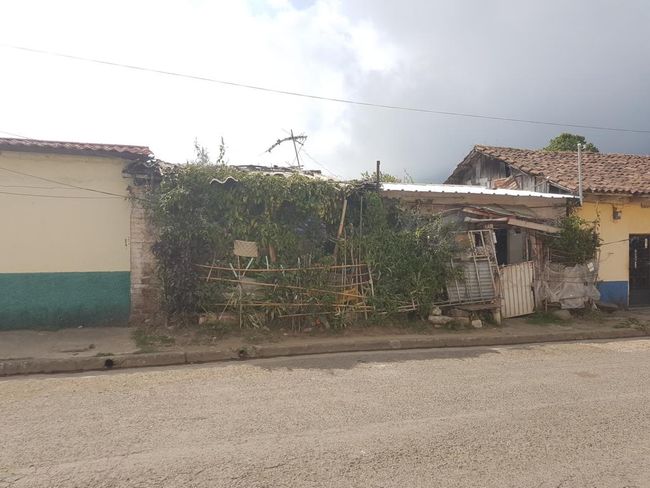
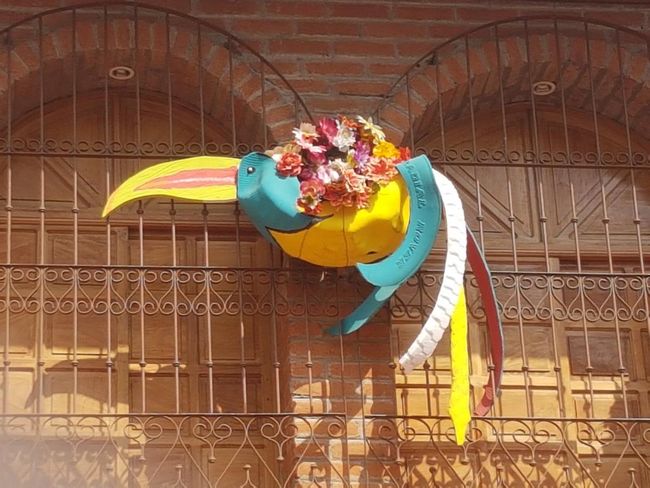
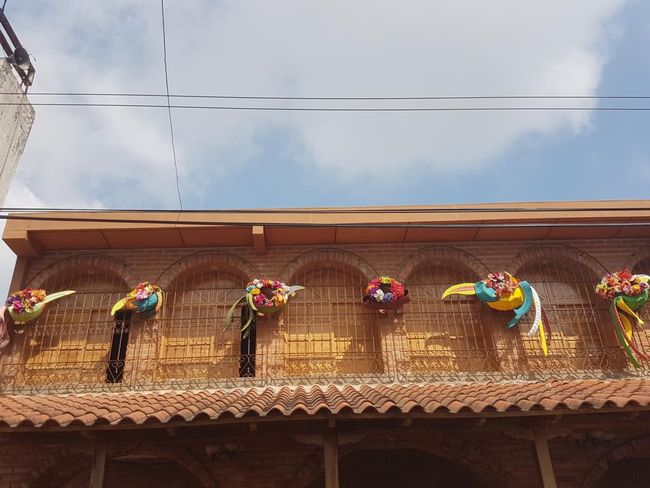
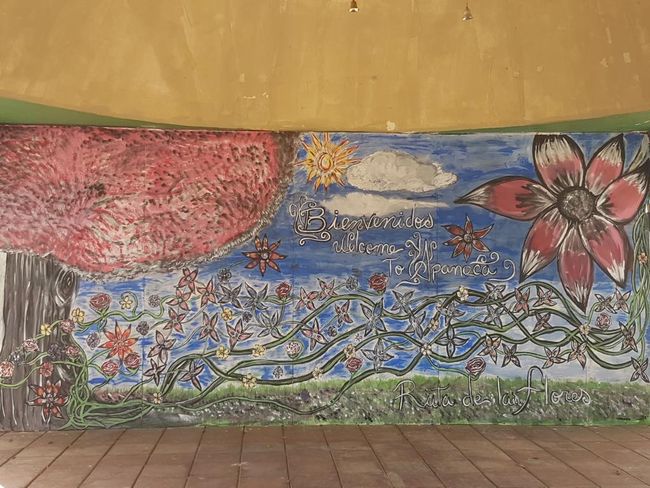
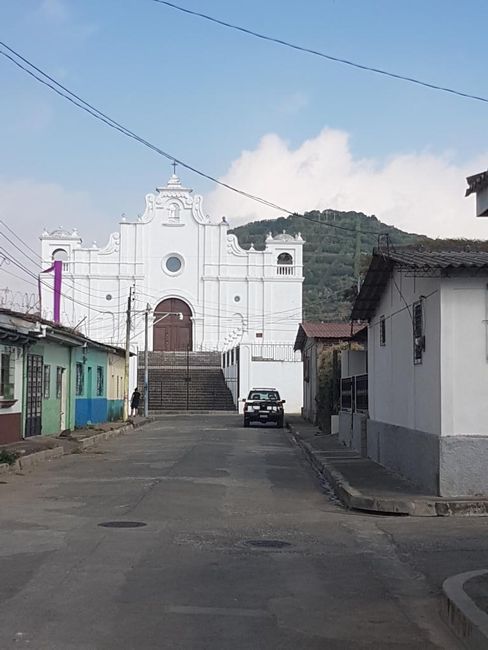
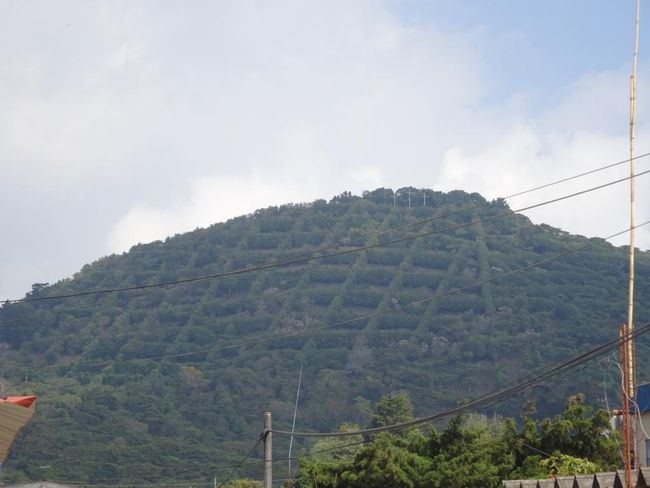
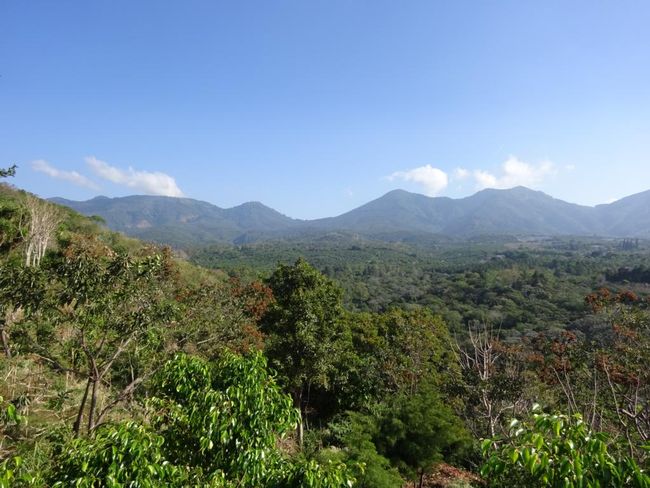
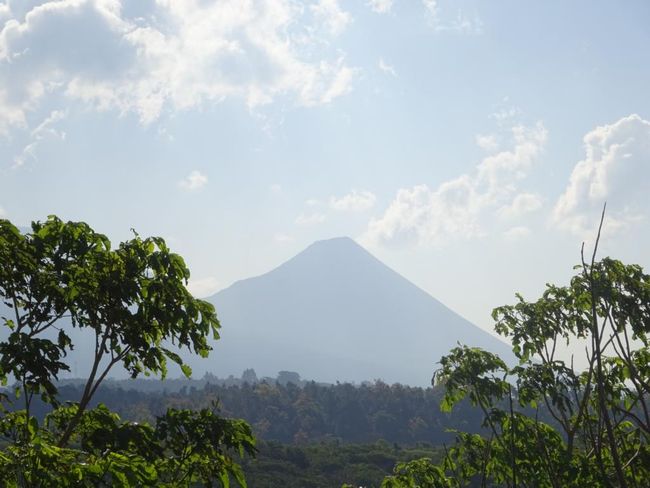
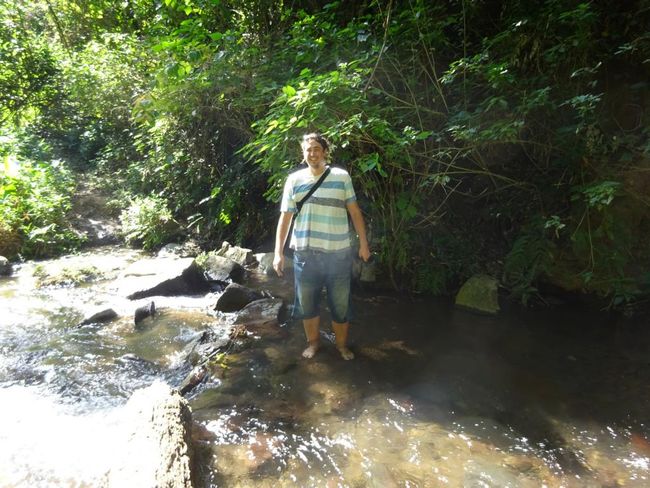
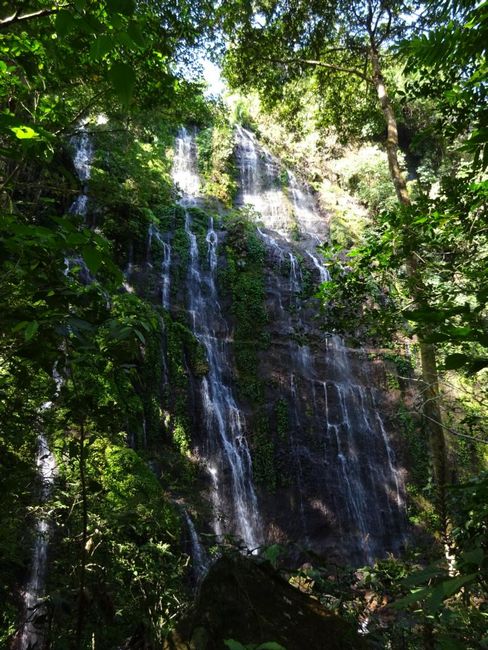
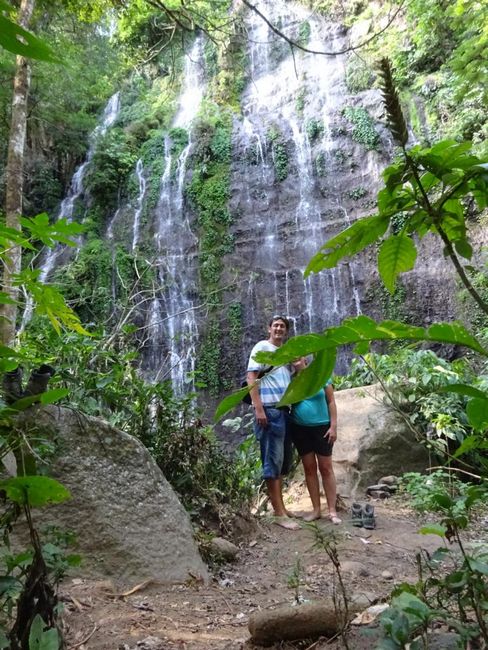
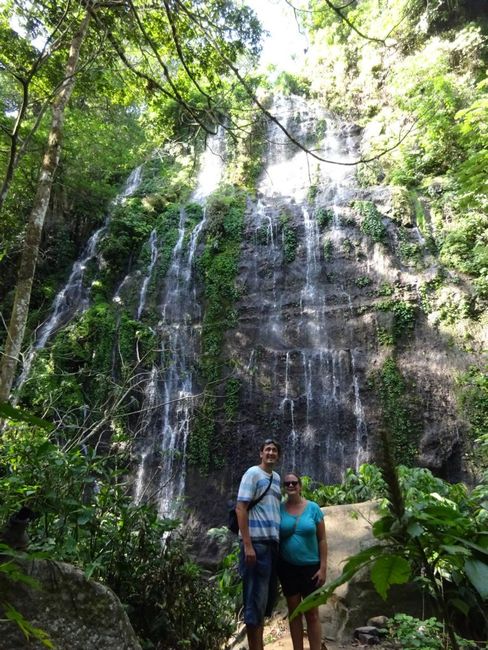
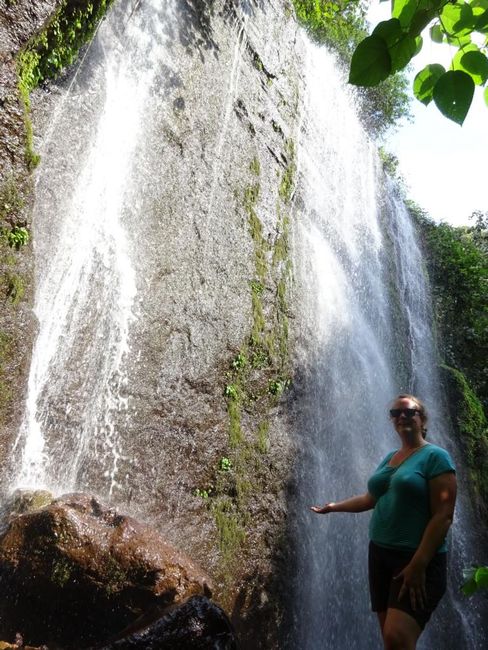
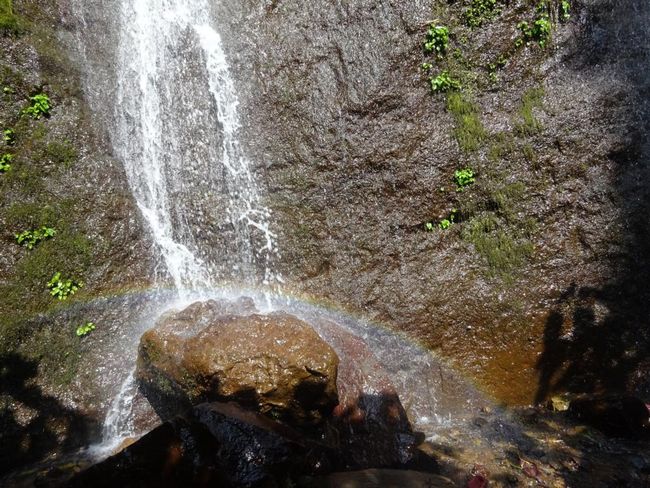
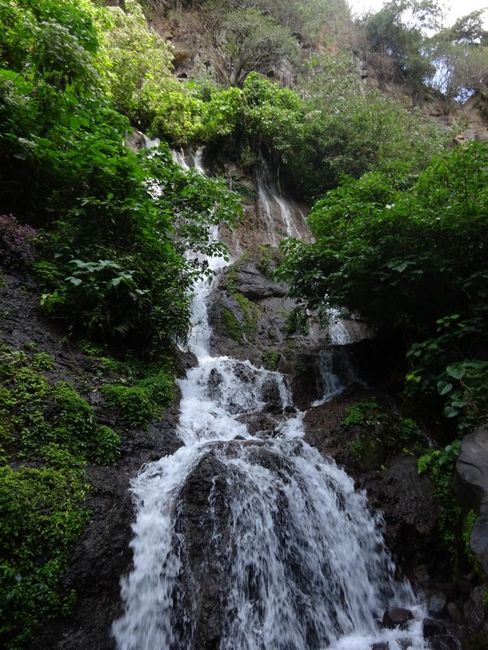
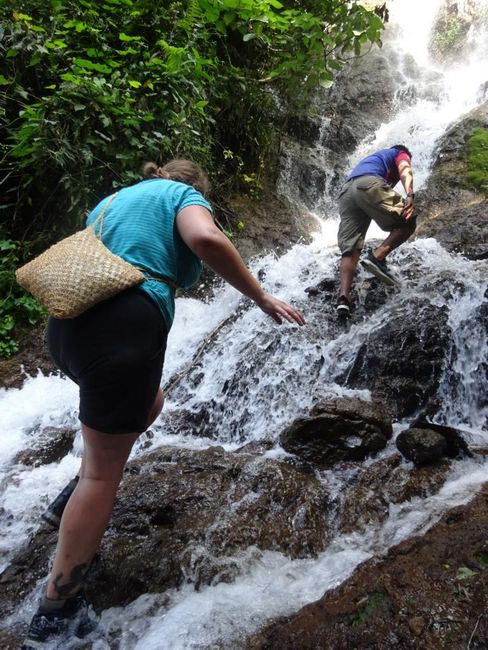
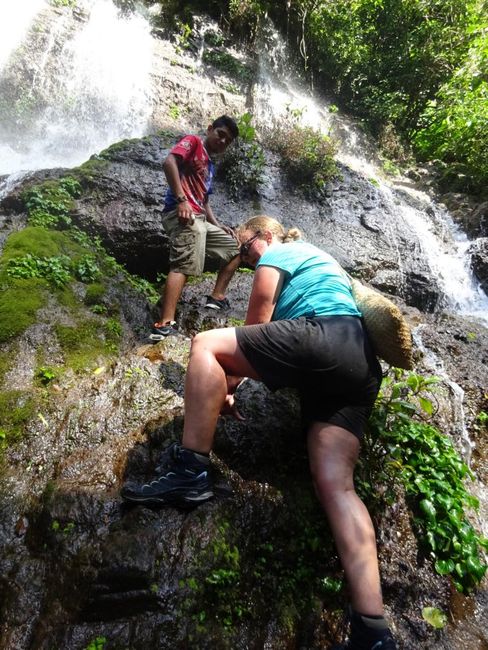
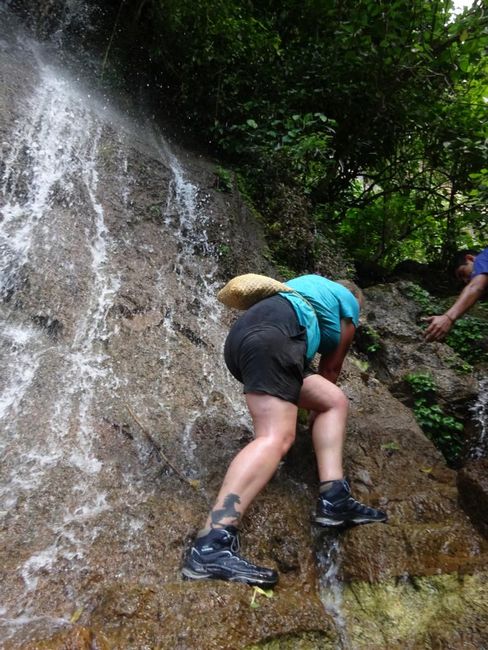
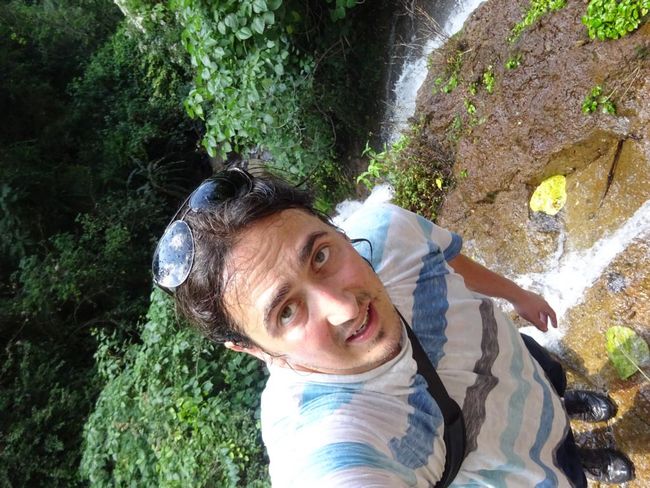
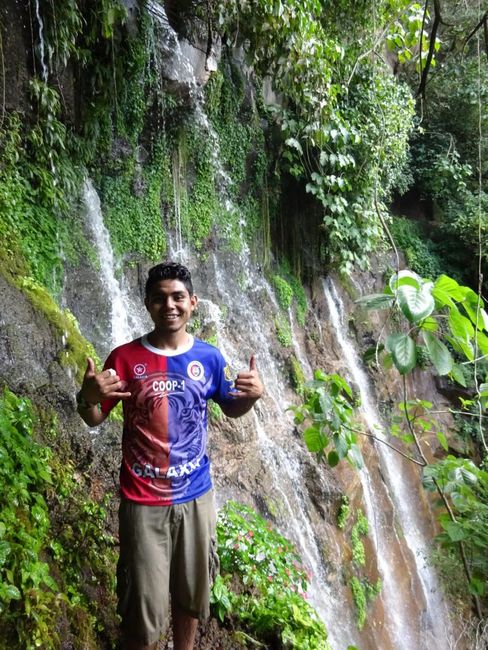
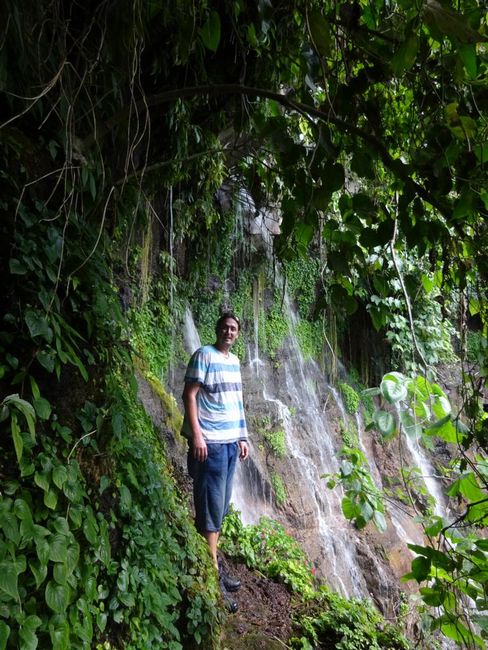
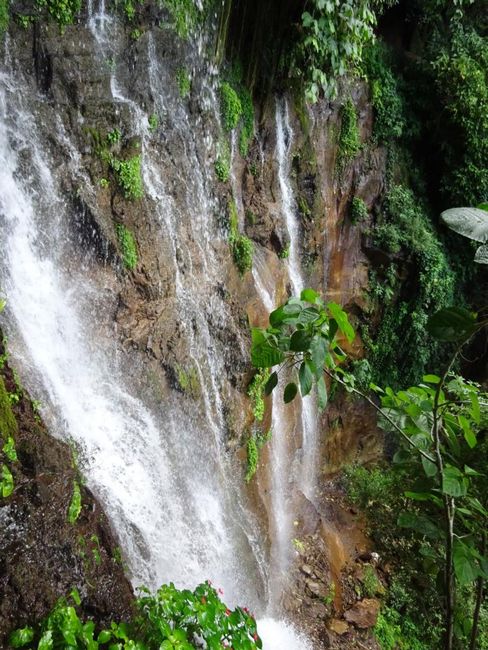
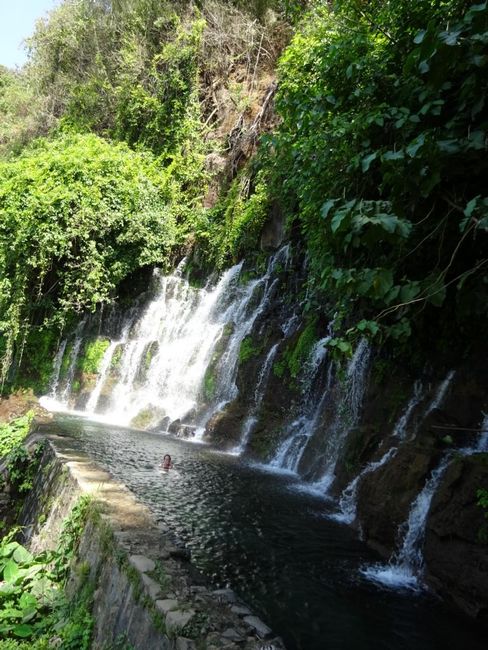
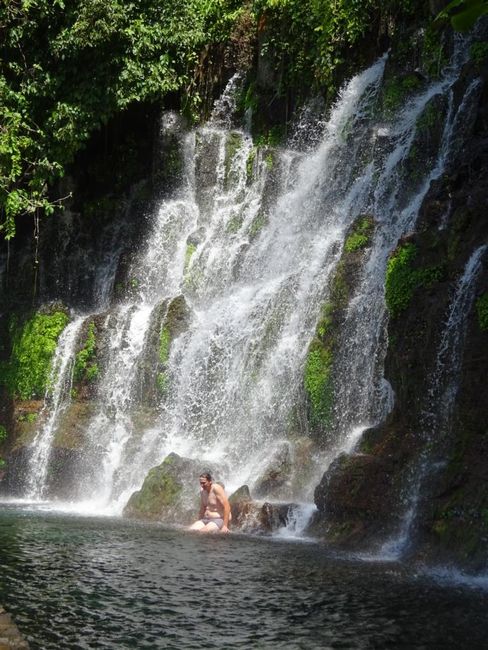
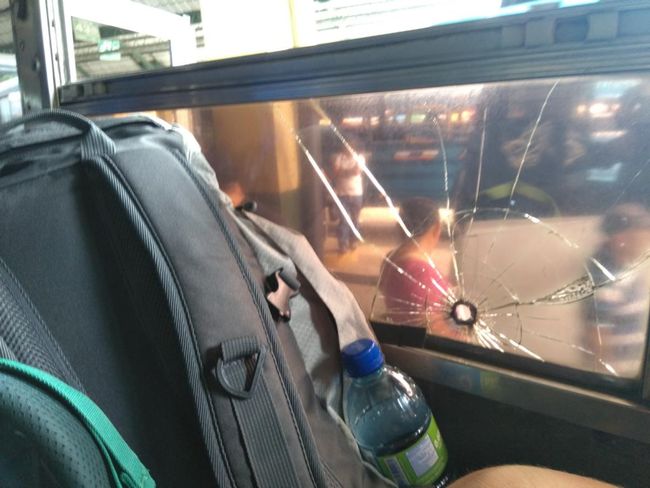
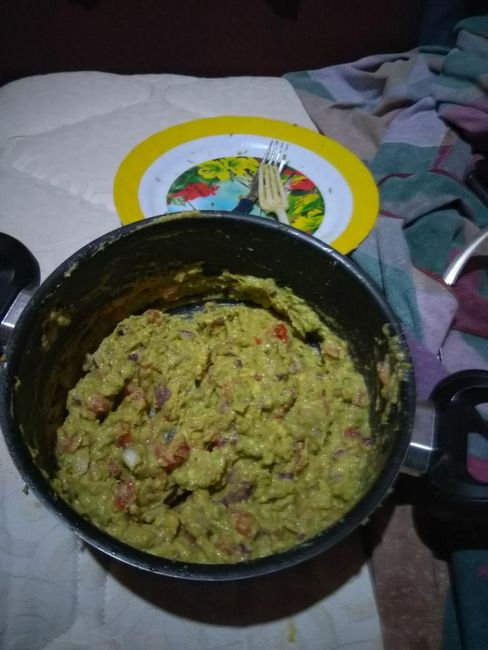
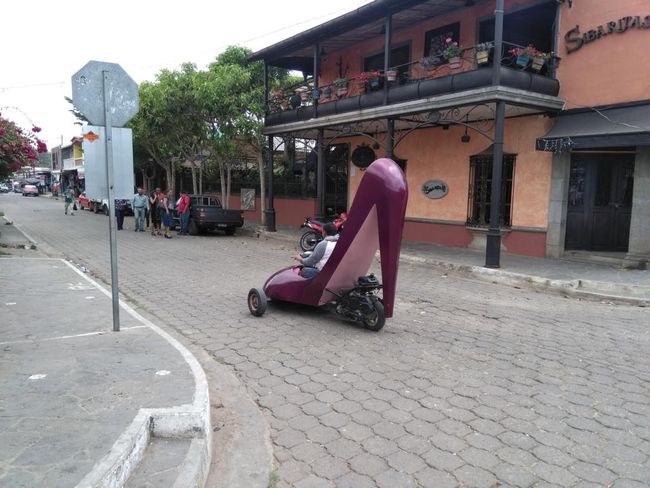
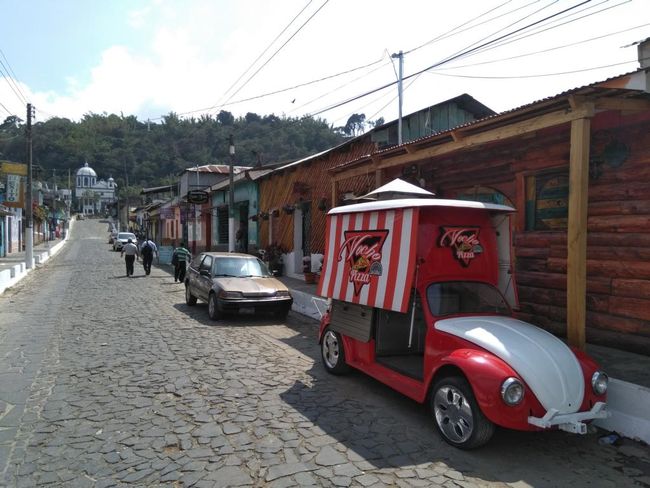
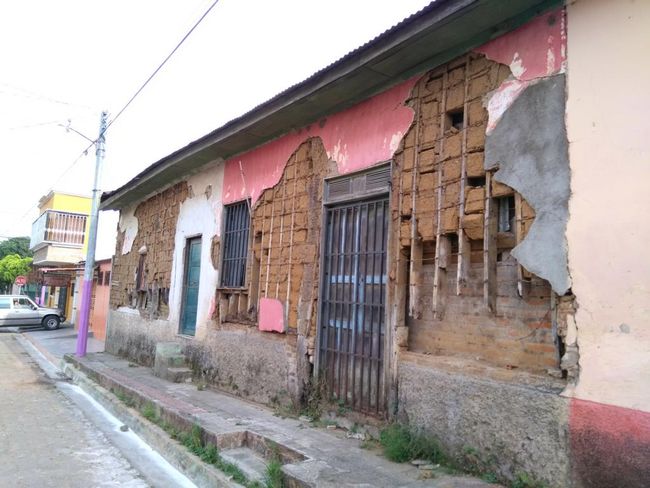
Ngolisa ho Newsletter
We took the bus from San Salvador to Juayua, which is located on the "famous" Ruta de las Flores and required a transfer in Sonsonate. When we wanted to load our luggage into the bus's baggage compartment at the terminal, they said there was no space, it was already full, and we had to wait for the next bus. So we went back to the long line of people who apparently also wanted to go to Sonsonate. It was confusing how exactly this worked. Even though there was a long line, some people kept getting on the bus from the front, without waiting in line. It seemed like there was some order to it because no one complained. Suddenly, an old grandma came with a huge sack full of something, and the helper immediately helped her load it into the baggage compartment. At that point, we found it too much and asked why there was suddenly space for this huge sack, which was bigger than the grandma, but not for our luggage. And behold, suddenly there was space, our luggage was loaded, and we could get on the bus. The bus was somewhat comfortable, but also quite full, and besides, it was extremely hot and stuffy, of course, there was no air conditioning. The bus kept filling up along the way, many people had to stand. I managed to sit next to the largest and thickest Salvadorian, so we both sat squeezed and sweating on the narrow bench. But he was a nice and friendly guy and he even helped us find the connecting bus. Especially workers got on along the way, and it was very interesting to see the men taking turns standing. Those who managed to get a seat changed places every 10-15 minutes with a colleague standing next to them.
In Sonsonate, it got even worse. The bus to Juayua was a tiny chicken bus. There was neither a luggage compartment nor a roof rack, so we asked the driver where we should put our stuff. He waved us away. So we squeezed ourselves with our suitcases onto the tiny bench at the front, where there was at least half a square meter more space than the other rows of seats, and we sat half on the bench and half on the suitcases, with all our limbs twisted strangely and our water canister and food on top. That would have been bearable for the 1-hour ride if it weren't for the construction site right outside the town and the resulting traffic jam, which turned the one-hour ride into two hours. The bus kept getting stuffed with more people along the way, and we wondered how we would ever get out of here with our luggage. Funny enough, these buses had a turnstile that people had to walk through, equipped with a counter. Presumably, the purpose of this was to monitor the driver's revenue for the bus owner. However, this system is not very efficient because eventually the driver simply blocks the turnstile with his hand and people have to climb over it. We were amazed to see even old grandpas hopping over the metal bars. Apparently, this is a daily sport here. The mobile vendors also climb over the turnstile because, logically, they don't pay for the short distance by bus until they get off again and look for the next bus. Fortunately, it turned out that most other passengers were also getting off in Juayua. When we finally got off the bus after this rather agonizing journey, we had to sit on a park bench and rest, enjoying the fresh air.
In Juayua, on weekdays, it is a pretty boring village. However, every weekend there is a Feria Gastronomica, a food fair. Then it seems that everyone from the surrounding villages comes here, and the atmosphere is like a real festival. And that is why we were here, today was Saturday. So we watched from our park bench as constantly new completely packed buses arrived to drop off the passengers here.
However, the Feria Gastronomica, apart from the cheerful atmosphere, was nothing special. Honestly, there weren't even particularly many food stalls, let alone stalls with "food from around the world," as we had originally read. We also searched in vain for stands with grilled iguana. Instead, there was a souvenir market and a large vegetable market, which takes place daily anyway, as we would later find out. In any case, you could have easily walked through and seen the whole thing in 1-2 hours. Afterwards, we enjoyed a "Piña Loca" (a crazy pineapple), a drink made from fresh pineapple flesh, rum, sugar, and ice, served directly in the hollowed-out pineapple. We absolutely have to include this drink in our own cocktail menu at home when our bar is set up again somewhere!
The next day, we took the bus along the Ruta de las Flores and visited the other villages in the area.
First, we stopped in Ataco. The place is known for its own good coffee, so of course, we wanted to have a cup. But as it turned out, it was more like watery broth than good coffee. Ataco is otherwise a charming little village with many colorful murals. The relatively large souvenir market is a pretty clear indication that this place belongs to the more touristy corners of El Salvador.
Here, and generally on the Ruta de las Flores, we saw indigenous women in their typical traditional clothing for the first time in a while. Nowhere else in El Salvador does anyone wear such clothes. On the contrary, people are all very modern (and quite revealingly) dressed. And there is a good and unfortunately very sad reason for this: In January 1932, there was an uprising by the peasants and the indigenous population against the harsh conditions in the coffee industry. The military brutally suppressed the rebellion and systematically killed anyone who had indigenous features, dressed indigenously, or in any other way supported the uprising. At the time, 30,000 people lost their lives. As a result, indigenous culture and tradition have almost completely died out in El Salvador. The indigenous women we met here were mainly from Guatemala, we later found out. Somehow, this country has nothing joyful to tell from its history.
The second village we visited was Apaneca, and the third was Salcoatitan. Both villages can actually be easily skipped, there is absolutely nothing to see. In Apaneca, we sat in the park for a while and had something cool to drink. We actually found an open post office here! We had almost given up hope! In Latin America, you feel old as soon as you ask a local where the post office is. You get looked at as if you came from another planet: "Post office? POST? There is no post office here! It has been closed for 5 years! So, you really mean the post office? Who needs the post office anymore? Have you ever heard of email? Or WhatsApp?" Okay okay, we got it. There is no post office here. But they sell postcards. They sell postcards everywhere. For whatever reason. It's also unusual for us here that you book tours and trips directly via WhatsApp and book hostels via Facebook. The world is going crazy...
Near Juayua, the Ruta de las Siete Cascadas, a hiking trail with 7 waterfalls, runs. We inquired about it at the hotel, and they told us that the trip would take about 4 hours. So we booked the tour for the next morning, with the aim of continuing to Santa Ana in the afternoon.
Our guide Eduardo, an 18-year-old boy, picked us up at the hotel. Interestingly, you are always advised to take a guide, especially for safety reasons, so as not to be attacked along the way. It makes you wonder what this half-pint of a boy, who was about half as tall, half as heavy, and half as wide as me, could do against a few armed bandits. But in fairness, we have to say in retrospect that we simply would not have found the way without him. Eduardo asked us whether we wanted to walk or take a tuktuk to the starting point. It was early in the morning, almost still in the middle of the night, so what kind of question was that!? Tuktuk, of course! So one was waved down, we sat in the back, and Eduardo sat in the front with the driver on the driver's seat. The ride took surprisingly long, and Eduardo later explained that it would have taken about 1.5 hours on foot. Thank goodness we chose the tuktuk, otherwise we probably wouldn't have made it to Santa Ana on the same day. First, we stopped at a small viewpoint where you had a wonderful view of most of El Salvador's volcanoes. Eduardo told us that this place used to be the local "dump." The locals would just throw all their waste down the slope here. A few years ago, young people cleaned up the area as part of a project and built this mirador for the tourists. Eduardo told us that he would be traveling to Switzerland in April for 2 months to participate in a volunteer program for cultural exchange at schools. That was obviously a fortunate coincidence, as we could give him some tips on what to see. We wouldn't be back yet during that time to invite him to visit us. He told us that he chose Switzerland because this area owes a lot to the Swiss. A few years ago, the entire village near the viewpoint was destroyed by an earthquake, and all the people lost their homes. The village was rebuilt with donations from Switzerland. Water pumps were also financed so that the houses can be supplied with running water and the villagers no longer have to go down the steep slope to the river several times a day to fetch water and wash their belongings. From the starting point, we then set off towards the waterfalls. First, we had to go downhill for a very long time, extremely steeply and on uneven, slippery ground. I was already fearing the climb back up and asked if we would take the same way back. Eduardo waved it off and said no, no, don't worry, we will take a different path and climb up through the waterfall. At that time, I really thought I must have misunderstood or he meant something different.
The hike to waterfalls 1-4 was a fairly decent path through the forest. Quite soon, we had to cross a river, and Eduardo told us to take off our shoes to walk through the river. Once we reached the other side, he dipped his shirt into the water to bring us water to wash our feet before putting our shoes back on. That really wasn't necessary, this Eduardo was a nice and friendly guy. The waterfalls weren't anything incredibly spectacular, but they were very pretty to look at.
Then we reached waterfall no. 5, and that's where the trail ended. We looked around a bit bewildered, wondering where to go next. Eduardo pointed upwards and casually said that we had to climb up through the waterfall here. It was really simple. Mhm...simple. Climbing up the steep, wet, slippery, smooth rock, without any safety measures, without any rope, easier said than done. Hiking to the waterfalls, they said. An easy hike, they said. There was never any mention of climbing up through the waterfall! About halfway up, I had a breakdown. I was terrified of slipping on the smooth rock and sliding off the tiny ledges and edges, I could already see myself falling down the waterfall backwards. I couldn't go any further, but I realized that I couldn't go back either. Climbing back down the waterfall would have been even more dangerous than going up. And so, Jörg pushed me from below while Eduardo pulled me from above, and what felt like an eternity of cursing and complaining loudly to myself (Why the hell do we keep doing this damn shit?!), I finally made it to the top. Now I had to sit down first and recover from the shock. I was completely soaked from head to toe after standing in the waterfall. Jörg was completely wet too. It even got to the camera, but luckily it still worked. In retrospect, I seriously questioned the action of using a T-shirt to get water to wash our feet and the whole taking off shoes when crossing the river! What was the point of that if we were going to get a cold waterfall shower barely 30 minutes later?!
Eduardo also seemed to be pretty scared by my reaction, apparently, it didn't seem right to him at all. He thought I had a fear of heights, which I don't have, but what if I did? In my opinion, this action was simply dangerous, climbing up there without any safety measures and without anything was about 10-15 meters, and I really don't want to fall down from there! Jörg and I had even discussed before whether we should wear hiking boots or sandals!! At least, people should be informed and warned beforehand about what they will encounter! (Then you could also pack the camera!)
After I recovered from the shock, we set off again, saw waterfalls no. 6 and 7 along the way, and finally reached "Los Chorros de la Calera," another group of waterfalls where you can swim in big, cool pools. Said and done, and actually, that was the best part of the tour.
After the refreshing bath, it wasn't far back to the road, where the tuktuk was already waiting for us to take us back to Juayua.
Eduardo even offered to have lunch with us and took us to his favorite pupuseria to show us the Salvadoran national dish, pupusas. These are grilled dough pancakes that are filled with various ingredients. They are eaten with the hands, and pickles and tomato sauce are served with them. Eduardo kindly showed us the place where buses to Santa Ana would leave in the afternoon and then brought us back to the hotel, where we said goodbye. It was really a nice day with Eduardo, apart from my waterfall trauma of course.
The Ruta de las Flores is probably one of the main attractions for tourists in El Salvador. In fact, we met relatively "many" tourists here, although of course, this is not comparable to Guatemala. "Many tourists" in El Salvador actually just means that you are not the only one.
For us, it wasn't particularly spectacular here, there isn't much to see, but it is quite safe here, and you can spend 1-2 nice and relaxed days here.
Ngolisa ho Newsletter
Araba
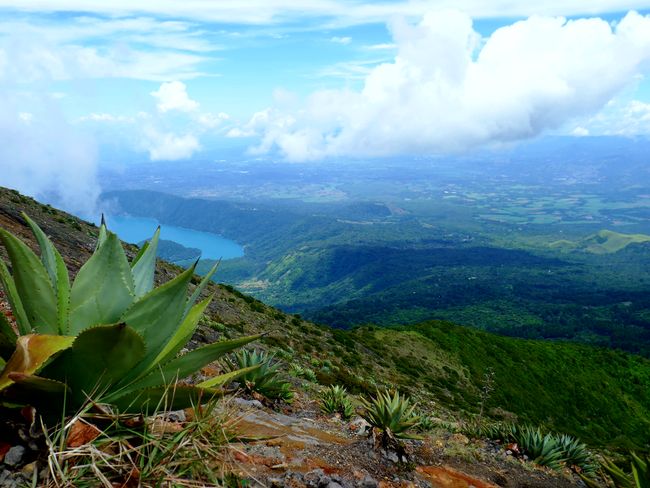
Litlaleho tsa maeto El Salvador

